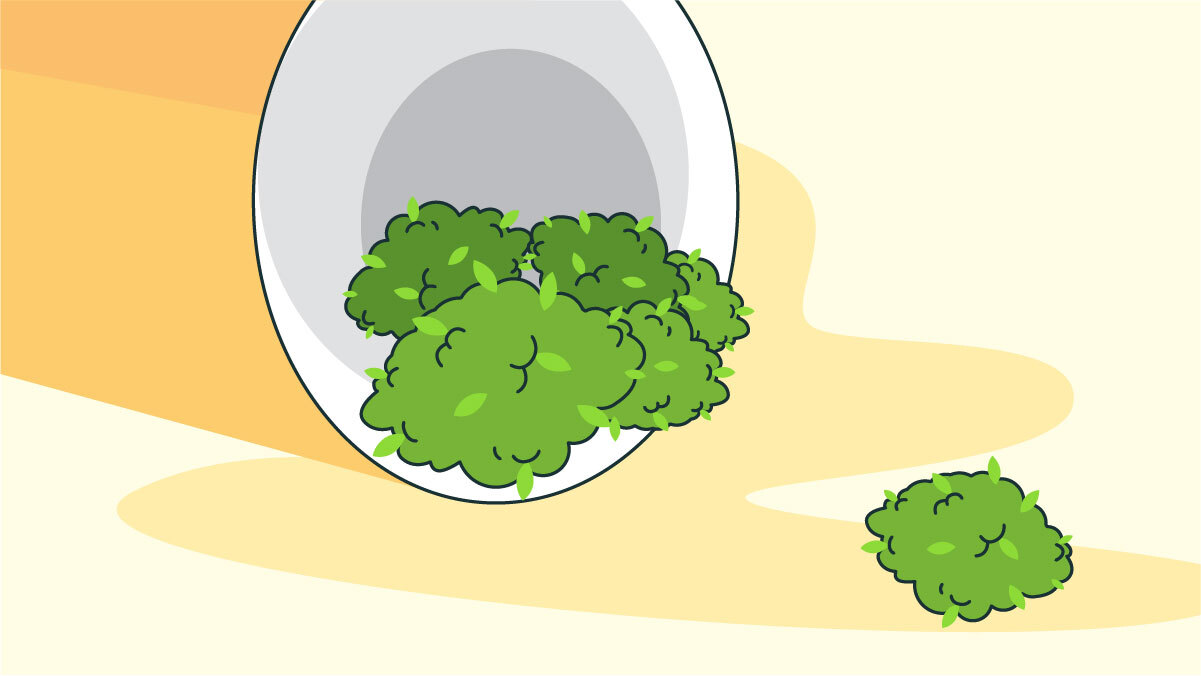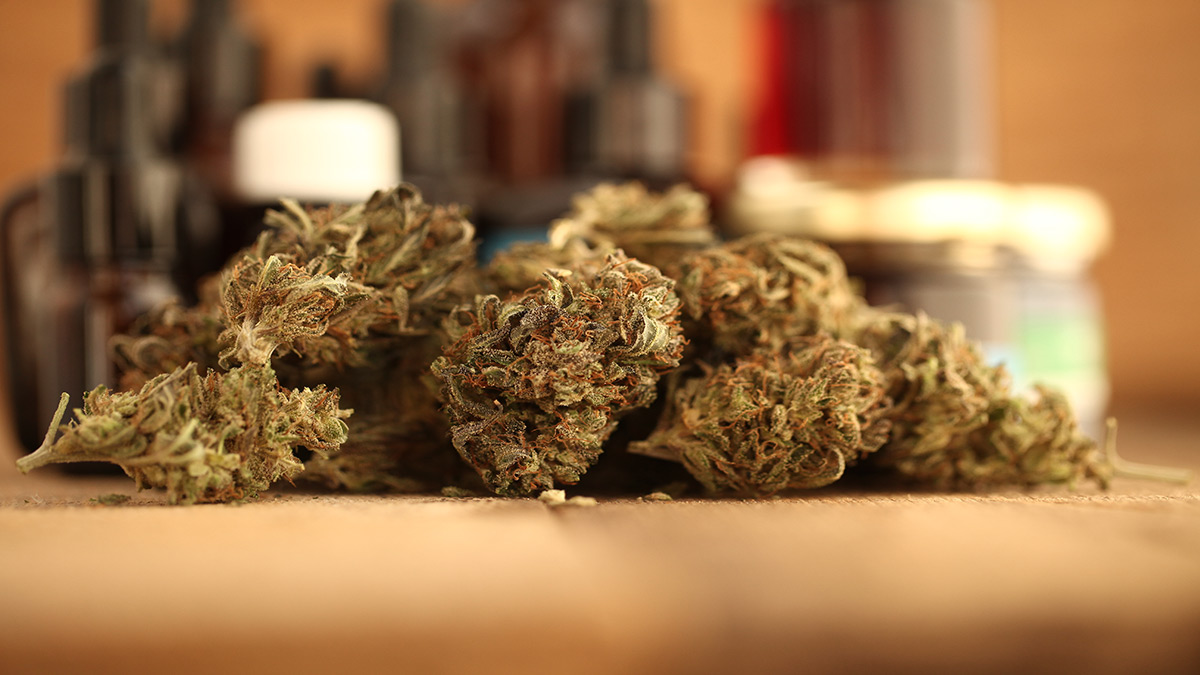What Is “Loud” Weed?

These days, most people can buy pot if they want to, even if they have no idea how to find a dealer.
38 states (and the District of Columbia) have now legalized marijuana for medical patients, for recreational use, or for both. If you don’t have a dispensary in your state, you’re probably within relatively easy driving distance of one.
Just because you can purchase and use cannabis, though, that doesn’t make you a full-fledged member of the weed community. You don’t earn those stripes until you’ve mastered the language.
Marijuana isn’t marijuana, it’s bud or flower or herb (or a million other terms even we can’t keep up with). Bud isn’t excellent, it’s dank. If it’s awful, it’s schwag or ditch weed. A smoking get-together isn’t a get-together, it’s a sesh. A pipe may be a pipe, but it’s also a piece.
Once you know the basic terms, you’re a member of the tribe – but you’ll still continue to hear slang that baffles you.
Here’s an example: loud weed.
Even many long-time smokers aren’t sure what that one means. Potent? Pungent? Dank?
Basically, yes. “Loud weed” is one of those terms that can have several different meanings, depending on the context. Let’s dig a little deeper.
Where Did The Term “Loud Weed” Come From?
As with most weed slang, it’s virtually impossible to nail down exactly who first used the term word “loud” to describe bud.
There are several theories, though. The most popular one points to Atlanta, where rappers like 2 Chainz and Gucci Mane are said to have started using “loud” to describe very high-quality flowers.
Others believe it was a natural extension of a term commonly used in the hip-hop world, where “loud” was a synonym for a really impressive gun. Or when it’s used to describe extremely smelly weed, “loud” could just be a variation on a phrase like “loud clothing” which is bold, instantly noticeable – and often ugly.
All of those stories could be true since loud is used in two similar ways to describe pot.
Some people use the word to refer to top-shelf, potent marijuana, which naturally would have a pungent, fragrant aroma. Others pay less attention to the quality of the bud, and simply use the word loud simply to describe a flower that is unusually smelly.
So if someone takes a huge hit, exhales, and says “Damn, that’s loud!” they’re talking about how dank the weed is. If someone opens a baggie and immediately says “Damn, that’s loud!” they’re talking about how pungent it is.
Hopefully, that clears things up a bit. It leaves us with one question, however.
What Makes Weed Loud?

Let’s start by debunking two common beliefs.
- Some may call weed “loud” because of its aroma, but that doesn’t automatically mean the flower is dank.
- Some may think a strain with an extremely high THC level must be “loud,” but THC content doesn’t always correlate with potency.
There are three important types of compounds in the cannabis plant, all of which combine to determine weed’s strength, flavor, and aroma. They’re the primary factors in whether weed is loud.
Cannabinoids
You know these – at least a couple of them. There are more than 100 different cannabinoids in marijuana, but THC and CBD are the ones that everybody knows and loves. THC, of course, is responsible for the bud’s psychoactive effects, and CBD provides a number of additional medicinal and/or health benefits.
The level of THC in a weed strain plays the most important role in how high you’ll get when you smoke, vape, or eat an edible. In other words, it’s one of the key determinants of how loud the flower will be. But it’s not the only one.
Terpenes
(Or terps, if we’re using weed slang.) These compounds are largely responsible for the pot’s aroma. In fact, the many terpenes that are contained in cannabis can be found in other plants as well; limonene gives oranges and lemons their citrusy scent, myrcene is primarily responsible for the herbal aroma of thyme and lemongrass, and linalool is what makes lavender smell like lavender.
Each weed strain contains different terpenes and different amounts of them, which is why each strain smells at least slightly different. The terps in weed also provide their own medicinal benefits and play a role in determining a strain’s potency. (If you’re using the term “loud” just to mean a powerful aroma, terpenoids are by far the main player.)
Flavonoids
All plants have flavonoids, too. The compounds are important for the plants’ growth and determine the plants’ pigments and colors. Once the plants are ready for harvest, flavonoids determine the appearance and flavor of the plant’s final products (and play a part in their aroma), they contribute additional health benefits to the end-user – and in cannabis, they also have a say in potency.
How do all of these compounds affect the strength of weed?
The Entourage Effect
More than 30 years ago, researchers began to speculate that all of the compounds in marijuana work together to provide its psychoactive and medicinal effects. A decade later, an in-depth study confirmed that theory, giving birth to an important phrase in the cannabis world: “the entourage effect.”
In short, it’s not just the amount of THC that determines the potency and effects of weed. CBD, other cannabinoids like CBG and CBN, terpenes, and flavonoids all combine to enhance THC’s properties.
That’s why you can’t just look at a number – the THC percentage in a strain – to know how “loud” it will be. There’s a delicate dance going on between the cannabinoids and other components in the pot, and it largely determines whether weed is loud (or dank), mids or regs. (The last two are also weed terms you should know, but we’ll leave it to you to figure those out.)
The Final Factor That Creates Loud Weed
When two people try to grow roses they may have very different results. A natural gardener might have a gorgeous plant with a bounty of beautiful, fragrant roses, while someone with a brown thumb might have a plant that just wither and die.
It’s no different for cannabis. The way any crop is grown tended and harvested makes a big difference in how it turns out. And in order to produce the loudest, most potent, dankest bud – weed that provides incredible highs with intense flavor and aroma – a producer must use ideal growing, harvesting, drying, and curing methods. They preserve the integrity of the plant’s components, allowing the end-user to enjoy their effects to the fullest.
Loud weed isn’t for everyone. Those who are primarily in search of mellow pain relief may not want a pungent flower that produces a soaring high. For connoisseurs, however, “loud” is a praiseworthy quality indeed.
Why Is Weed Called Loud? FAQ
Q: I thought “loud weed” was a strain.
A: You may be thinking of a sativa-dominant strain called Loud Dream, which is often cited as a prime example of loud weed. It not only has very high THC levels, but the terpene myrcene gives it a pungent, sweet aroma. It’s very popular and very expensive.
Q: Are there some strains that are more likely to be loud?
A: Those derived from Skunk #1 (of course) and the Hindu Kush are going to be among the most pungent and potent, as long as they’ve been properly grown.
Q: Can you tell loud weed just from looking at it?
A: Not necessarily, but the best approach is to look for a high-THC flower with vibrant colors and lots of shiny, sticky trichomes – and then smell it. The proper combination of THC content, appearance, and aroma will give you a good idea that you’re dealing with some very loud weed.